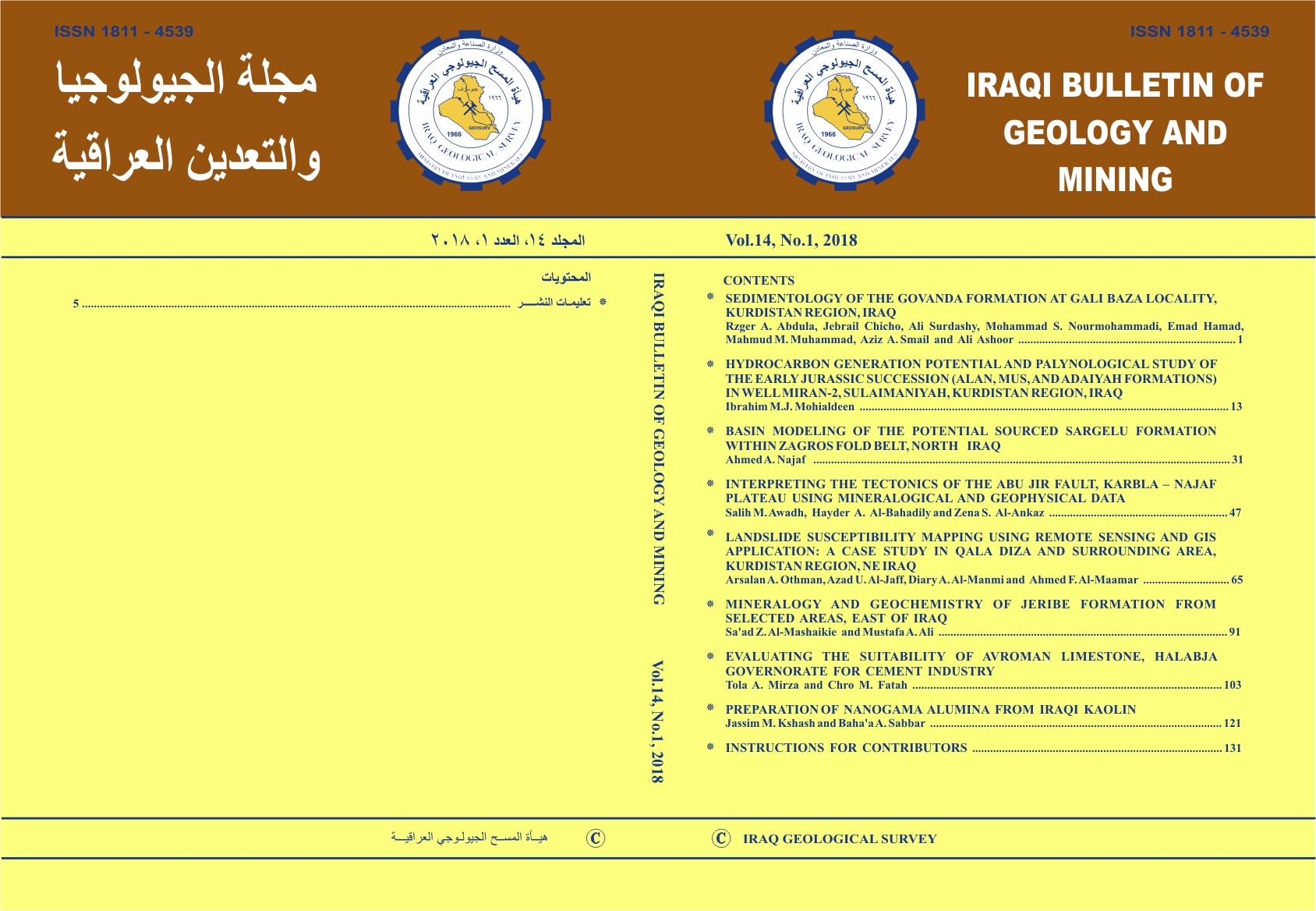Abstract
The lithology of the Govanda Formation (Miocene) at Gali Baza locality, northeastern Iraq consists of massive conglomeratic bed at the base, grading upward to thin to medium bedded calcareous sandstone, sandy limestone, calcareous shale, and thin siltstone beds. The petrographic study of clastic and carbonate rocks, based on 21 thin sections, indicates that the major components are different kinds of rock fragments, quartz, altered feldspar and mica for the clastics and non- and/ or low-skeletal grains for the carbonates. The study showed that compaction is the most common diagenetic process affecting in the studied samples, appearing in the form of penetration between grains and grain deformation. Accordingly, it is suggested that the deposition of the Govanda Formation, in the studied Gali Baza section, had taken place in a littoral environment with terrigenous clastic supply.
Keywords
Diagenesis
Gali Baza; Petrography
Govanda Formation
Iraq
Kurdistan region
Lithology
Abstract
تتكون صخارية تكوين ﮔوڤندا (الميوسين) في ﮔلي بازا، شمال العراق من تكتل ضخم من المدملكات في القاعدة تعلوها طبقات من حجر رملي رقيق الى متوسط التطبق، وحجر جيري رملي، وسجيل صخري، وطبقات رقيقة من الحجر الغريني. بينت الدراسه البيتروغرافية للصخور الفتاتية والكربوناتية، التي تستند إلى فحوصات مجهرية لـ ٢١ شريحة رقيقة إن المكونات الرئيسية في الفتاتيات هي أنواع مختلفة من شظايا الصخور والكوارتز والفلسبار المحورة والمايكا والحبيبات غير الهيكلية وبنسبة أقل من الحبيبات الهيكلية لصخور الكربونات. وكشفت الدراسة أن الضغط هو أحد أهم المسببات للعمليات التحويرية في العينات التي تمت دراستها وتظهر آثاره الأكثر شيوعا على شكل اختراق وتشوه الحبيبات الفتاتية. بينت هذه الدراسة أن ترسب تكوين ﮔوڤندا في المقطع المدروس في منطقة ﮔلي بازا قد وقع في بيئة قريبة من الساحل مع إمدادات من الفتاتيات القارية.
